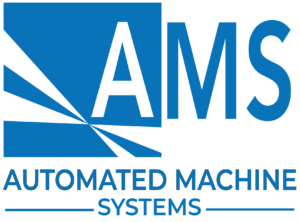Decades of experience in a range of industries
Proven processes for smooth delivery
Engineering and design expertise
Do More: Automated Machinery for Efficiency
In manufacturing, we hear a lot about efficiency. The definition of the term seems to vary from discussion to discussion in industrial engineering. Regardless of which definition you prefer, we can all agree that seeking high efficiency is generally a good thing. That’s where automated machinery comes in.
Achieving high efficiency reflects an intentional investment in doing more with less to the benefit of the manufacturer, their customers and their wider community. In this way, efficient manufacturers embody the role of responsible corporate citizens, conserving resources and maximizing productive output for all to see.
This operational excellence would not be possible without the help of advanced automated manufacturing systems. So let’s explore the details of this critical topic

Manufacturing Efficiency: An Industrial Imperative
First let's introduce the core business benefits that high operational efficiency provides:
-
Personnel Safety
Believe it or not, an efficient workplace is statistically more likely to be a safer workplace as well. Organizations that manage themselves to a high efficiency standard tend to emphasize greater attention to detail, higher employee engagement, lower tolerance for slack and generally less hurried environments. These factors directly reduce employee burden and distraction, leading to fewer accidents and injuries.
-
Risk Management
Aside from the safety risks mentioned above, inefficient organizations can be exposed to high commercial, legal and stakeholder risks. Declines in manufacturing efficiency tend to play out negatively in the marketplace in terms of eroded brand identity, lost competitive advantage and the inability to successfully meet demands.
-
Customer Satisfaction
Chances are that any time a customer suffers from poor customer service treatment, late or incorrect deliveries, or inconsistent product quality, the root cause of the issue can be traced back to inefficient operations. If left uncorrected, these problems can devolve into low aggregate customer satisfaction levels and eventually, customer attrition.
-
Operational Excellence
High efficiency measurements can directly indicate overall high operational excellence levels, especially when those measurements are taken across business units. Said another way, businesses that reach best-in-class or even world-class manufacturing efficiency levels only get to that point by aligning operations across their entire supply chain, which speaks to the company's holistic integrity.
-
Financial Performance
There is an interesting correlation between financial performance and manufacturing efficiency. Low efficiency is clearly wasteful of both resources and capital, but so is extreme efficiency that overshoots the point of diminishing returns. In this way, manufacturing efficiency has a sweet spot that provides the best financial performance and therefore the highest margins.
The Many Forms of Efficiency in Industrial Automation
Now that we've outlined why operational efficiency is so commercially important to manufacturers, let's break down the most common ways that industrial part producers measure efficiency for themselves. Along the way, we'll introduce how automated machinery fits into these efficiency categories as well.
Measuring energy efficiency across manufacturing processes defines how much acceptable work output can be produced at a given energy input level. Manual manufacturing systems are very often replaced with automated systems in order to increase a plant's energy efficiency, which the new systems provide through either lower energy demand per unit or by producing more units at the same energy demand. Either way, energy is saved per unit produced.
Individual machinery stations are commonly measured in terms of equipment efficiency, which is the amount of time that the system produces acceptable work compared to the amount of scheduled run time. A formal calculation can be used (such as the industry standard OEE (overall equipment efficiency) equation, or an informal measure of machine uptime versus downtime. For example, in a given eight-hour work shift, a manual machine prone to breakdowns may only produce good products for five hours per day compared to an automated system's 7.8 hours per day, resulting in the automated machinery offering higher equipment efficiency.
Where individual machines are measured in terms of equipment efficiency, entire production lines are measured in production efficiency. Total line throughput rates, cycle times and aggregated machine utilization rates are all compiled and compared against their expected performance ratings. This equates to a total line production efficiency level. Maximizing production efficiency is a key application for automation, where individual stations are integrated using a central logic controller that governs machine-to-machine handoffs, line speed control and fault management in real-time.
Operational efficiency builds upon production efficiency by tying production line performance to overall business unit performance. An operation may be defined as a portion of a manufacturing plant (such as four lines making the same product), an entire plant, a multi-plant campus or even a complete supply chain. In all cases, operational efficiency compares output products to all associated inputs and resources including equipment, personnel, energy, infrastructure, real estate (e.g. warehouse space) and logistics. Automated enterprise management systems control operational efficiency by avoiding bottlenecks, balancing plant demands and optimizing resource allocation.
A very modern form of efficiency is measured in terms of manufacturing sustainability, which today can be applied to entire plants or all the way down to individual tool processes inside of stand-alone machines. In short, sustainability measures how well a machine meets production expectations without compromising future natural resources or environmental conditions. Sustainability calculations can become monstrous, incorporating factors such as renewable energy utilization, carbon generation, thermal emissions and even replacement part consumption rates. In a way, sustainability measures a process’s efficiency of natural resource consumption, and will surely be an increasingly common performance metric for automated systems into the future.
Selecting Automated Machinery for Plant Effectiveness
Glue Dispensing
AMS deployed one of our GC-401 Glue Dispensing and Curing systems to replace an existing manual package gluing station for a manufacturer of hygienic medical devices. This automated solution solved for equipment efficiency as well as production efficiency concerns, as the prior system required a dedicated employee to perform the cumbersome task of spot-gluing packages at a slow rate that bottlenecked the entire packaging line.
Leak Testing
Using an LT-401 Pressure Decay Leak Test system, AMS directly addressed operational efficiency concerns for a customer who previously relied on outsourced, third-party automated inspection performed offsite. Bringing leak testing inhouse, the customer immediately eliminated extra logistics and intermediate packaging steps from their operation, saving time, cost and incidental damages in transit.
Total Operational Efficiency: A CapEx or OpEx Opportunity?
While we hope that we’ve given readers new ways to think about the concept of manufacturing efficiency, we also hope that a single, tangible idea is ringing true: Incorporating automated machinery solutions into any type of manufacturing environment is a surefire way to boost efficiency. With that said, there is one remaining question buyers should ask themselves, and that is if their commercial motivation for seeking out higher efficiency is stemming from a capital investment opportunity or an operating expense opportunity.
Capital investments tend to be strategic in nature, opening up new sales avenues, expanding production volumes to serve new market demands or adding new production capabilities. On the other hand, operating expense concerns tend to be tactical in nature, solving profit margin erosion, regulatory and compliance issues, labor shortages or quality declines.
This is an important distinction to make when seeking out automated solutions as it clarifies for buyers how to financially equate efficiency gains with ROI metrics. In addition, it tells automated machine manufacturers what pain points and cost profiles they need to specifically address with their solutions.
The best automation investments come complete with a visceral understanding of how the solution will pay itself back to the business. Using efficiency factors as we’ve discussed here is a concrete way to prove this value and pave the way towards achieving total operational excellence.
